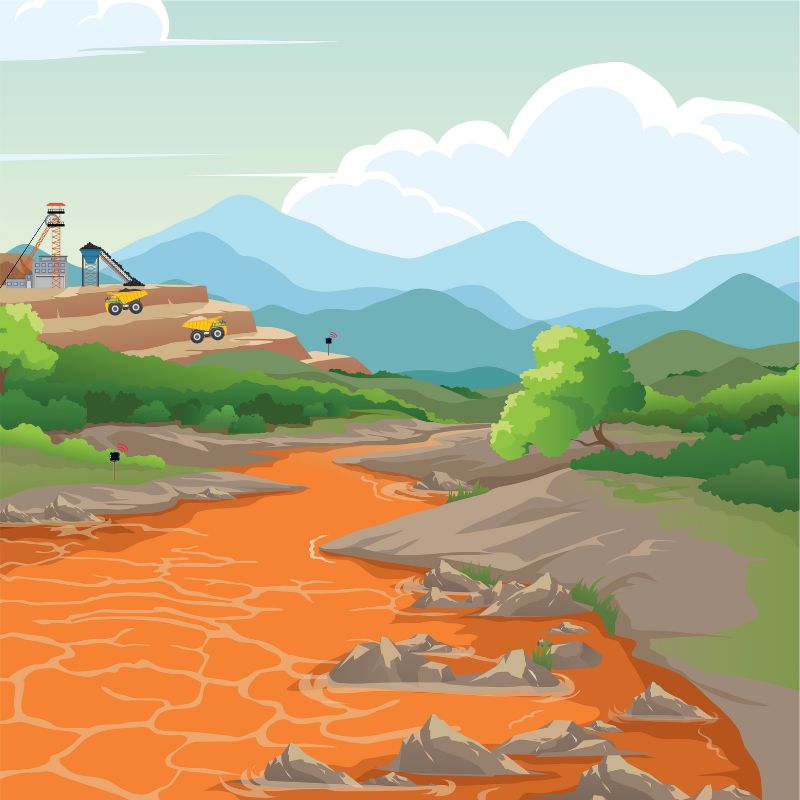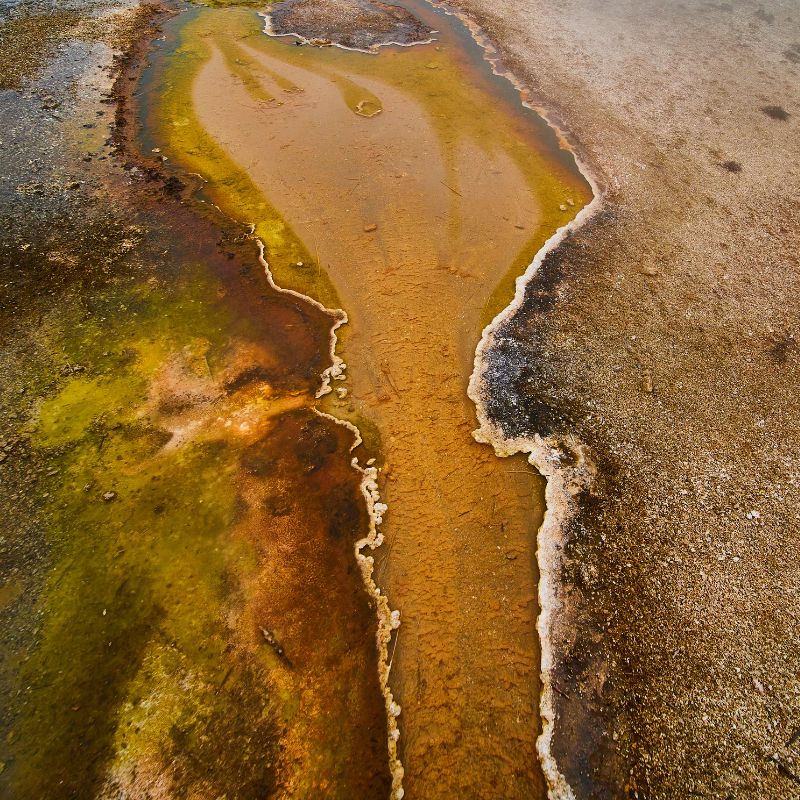Acid mine drainage (AMD), also known as acid rock drainage (ARD), is a significant environmental concern arising from the exposure of sulfide minerals in mining waste to air and water. This chemical reaction, driven by the oxidation of sulfides, leads to the generation of highly acidic waters and the release of toxic heavy metals, wreaking havoc on ecosystems and water quality. AMD’s potential to contaminate water bodies and harm aquatic life underscores the critical importance of preventive measures (Akcil & Koldas, 2005). One crucial strategy in preventing AMD is the monitoring of waste dumps and tailings temperatures, a practice gaining prominence for its potential to predict and avert such environmental disasters (Kuyucak, 2012).
The Role of Temperature in Acid Mine Drainage
A compelling correlation exists between temperature, sulfide oxidation rates, and the subsequent generation of acidic solutions. Higher temperatures accelerate chemical reactions, intensifying the pace at which sulfide minerals react with oxygen and water, resulting in the production of sulfuric acid. This acid, in turn, accelerates the leaching of metals from mining waste, exacerbating the environmental impact (US EPA, 1994).
In this perspective, the significance of temperature monitoring becomes a pivotal factor in preventing ARD. Accurate and real-time temperature data allows mining operators to pinpoint potential problem areas where sulfide oxidation rates might surge due to temperature fluctuations (Rigueira et al., 2023). Such insights empower timely interventions, preventing the onset of AMD and mitigating its destructive consequences. A sophisticated temperature monitoring system serves as a sentinel, ensuring that temperatures remain within safe thresholds and alerting operators to deviations that demand attention.

Employing in-situ temperature monitoring is a valuable technique for closely tracking the sulfide oxidation process. This method involves the use of specialized instruments, such as temperature cables, strategically placed within the monitoring wells. These instruments detect temperature increases indicative of the oxidation reaction. By continuously monitoring temperature changes in real-time, mining operators gain valuable insights into the progression of sulfide oxidation.
Environmental Impacts of Acid Mine Drainage
The devastating impacts of AMD ripple through ecosystems, causing widespread harm to surrounding water bodies, soil, and aquatic life (US EPA, 1994). AMD-contaminated waters with low pH levels can infiltrate rivers, streams, and groundwater, leading to the acidification of these vital water sources (Nordstrom & Alpers, 1999). This acidification disrupts the aquatic food chain and reduces the biodiversity of aquatic ecosystems, threatening fish populations and other aquatic organisms (Nimick et al., 2003). Furthermore, soil in affected areas can become less fertile due to the deposition of toxic metals, hindering agricultural productivity and long-term land use (Kabata-Pendias & Pendias, 2001).
In addition, remediating AMD-contaminated sites is a complex and expensive endeavor. Traditional remediation methods involve neutralizing acidified waters and treating metal-contaminated sediments. These techniques demand significant financial investments and pose challenges in terms of site accessibility, proper waste disposal, and long-term effectiveness (Salomons & Forstner, 1988). The economic burden extends beyond cleanup, as communities reliant on affected water sources may face economic losses due to declines in fisheries, tourism, and other industries (Mitchell, 2004).

Advancements in Temperature Monitoring Technology for ARD
In-situ instrumentation, such as temperature cables, offers a means to closely monitor the sulfide oxidation process by detecting elevated temperatures associated with the reaction. These digital temperature cables are strategically placed within monitoring wells situated in waste dumps or tailings storage facilities (TSFs), with each cable incorporating multiple thermistor sensors positioned at varying depths. The temperature sensors detect elevated temperatures that could cause ARD, and then they send this information to data loggers, which promptly share the data with monitoring software. This software keeps an eye on temperature changes, which can signal the start of reactions causing AMD. Users can monitor temperatures at varying depths and across the facility using multiple cables.
Digital temperature sensor systems bring precision and efficiency to the forefront of waste dump and tailings monitoring. These sensors are equipped to deliver real-time temperature data, enabling timely responses to potential AMD risks. Their installation process has been streamlined, often involving user-friendly mechanisms that make setup straightforward and less labor-intensive.
Looking Ahead: Ensuring Sustainable Mining Practices
Monitoring waste dump and tailings temperatures is a pivotal step towards aligning mining operations with sustainable goals. By assessing potential AMD risks in real time, mining companies can make informed decisions to prevent environmental degradation. Implementing temperature monitoring showcases a dedication to responsible resource extraction and contributes to the preservation of water bodies, soil quality, and biodiversity.
Conclusion
As the mining industry embraces a sustainable ethos, it’s imperative to consider the profound impact of temperature monitoring on environmental protection. By integrating advanced temperature sensor systems, mining companies can fortify their commitment to socially responsible mining.
beadedstream’s sensors, data loggers, and beadedcloud data dashboard are engineered to meet the evolving needs of modern mining operations. With a commitment to technological innovation, our solutions empower mining companies to detect potential ARD risks with precision and timeliness. Through the seamless integration of our temperature sensor cables into your monitoring framework, you can enhance your environmental stewardship while simultaneously optimizing your mining operations. If you’re interested in collaborating for sustainable solutions, feel free to reach out to us at contact@beadedstream.com.








